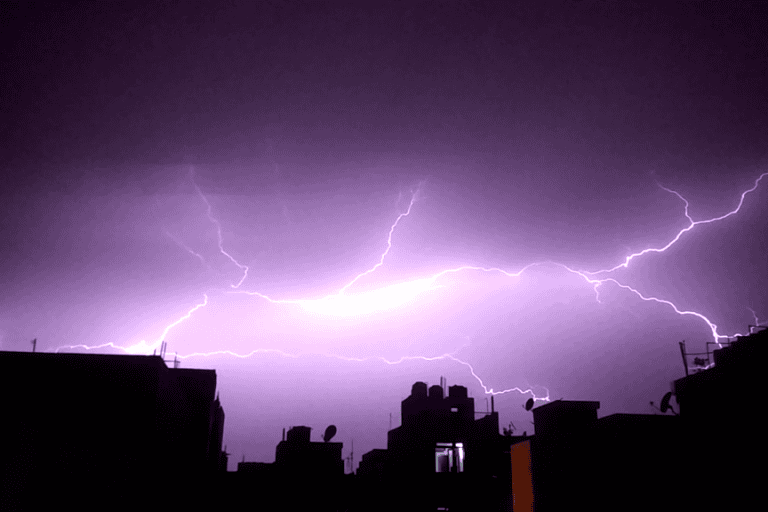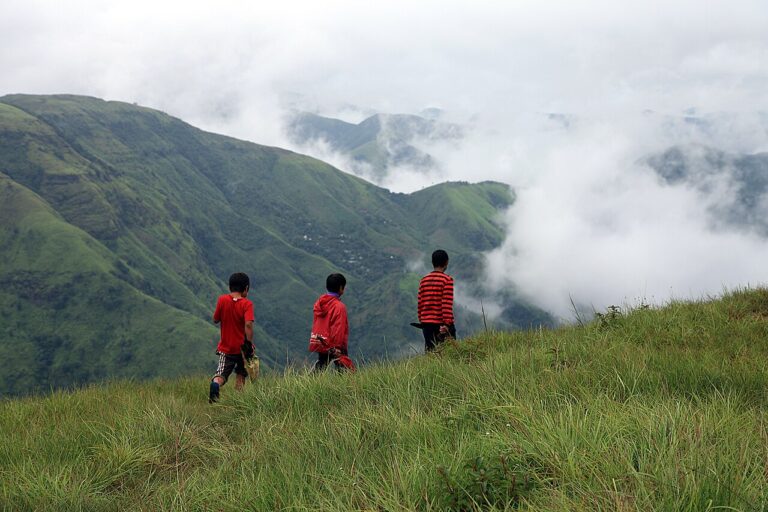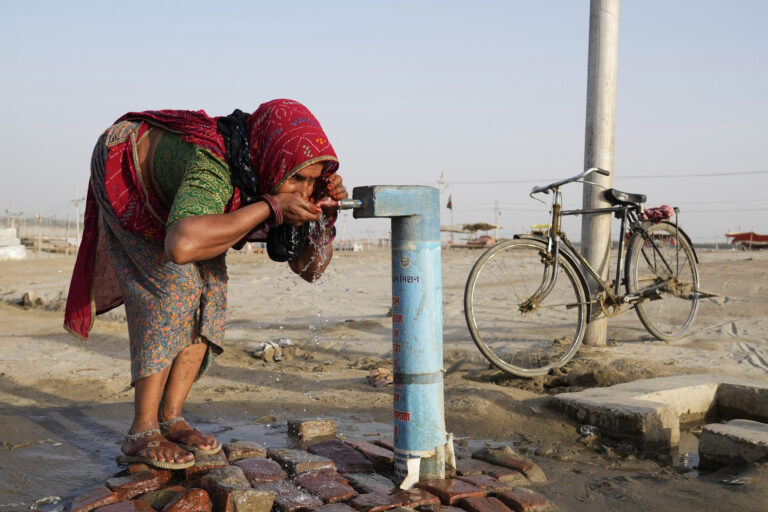- Last week, northern India was hit by a severe dust storm killing over 120 people and injuring at least 300 across several States.
- The India Meteorological Department officials admit that the severity of the dust storm was high and it needs to be studied further to understand the associated trends.
- Experts also believe that the severity and frequency of dust storms are expected to rise in years ahead due to rising global temperature.
Over the past few years, rise in the global temperature has set new records and that is leading to increase in the number of extreme weather events. India may also witness an increase in the severity and frequency of the dust storms and thunderstorms similar to what the northern Indian states experienced recently.
The government agencies, private forecasters, and independent experts share a similar sentiment on the issue and predict an increase in the possibilities of such events in the future.
“Intensity of sandstorms is increasing across the world. There is a study on American Midwest, then there is a study on the Middle-East and then the Sahara desert – they are all linking it to increase in the sudden increase of surface temperature. All of them are saying that as the climate gets warmer the temperature gradient is going to become very steep. This steep increase in temperature gradient will lead to two things – heat waves and sand storms,” said Chandra Bhushan, deputy director general at the Centre for Science and Environment (CSE), a Delhi based think tank.
“There is enough research happening (to predict) that the intensity of sandstorms is going to become more intense as the temperature increases further. It is indeed linked to climate change,” Bhushan added.

In the present case, severe dust storms, thunderstorms, and lightning hit several parts of India last week, resulting in the death of at least 124 people and injuries to 300 others across five states – Rajasthan, Uttar Pradesh, Telangana, Uttarakhand, and Punjab.
Among the five states, 73 deaths were recorded in Uttar Pradesh while there were 35 deaths in Rajasthan, eight in Telangana, six in Uttarakhand and two in Punjab. As per the officials of the Ministry of Home Affairs, the worst affected region in terms of deaths and injuries was Agra in Uttar Pradesh. Besides, the deaths and injuries, over 10,000 electric poles and hundreds of transformers were damaged. Farmers also suffered losses with their cattle and poultry.
Chandra Bhushan said the enormity of losses due to dust storms is shocking but they will become more intense in the future.
“With the rise in global temperature the soil is going to become drier. So, the amount of soil that wind can carry is also increasing. With both the intensity of the wind and dryness of the soil increasing, the intensity of dust storm is going to further increase in the future. Climate change is intensifying all extreme weather events,” Bhushan emphasised.
Intense heat can cause dust and thunderstorms
On May 2, 2018, severe dust storms and thunderstorms hit parts of Rajasthan, Uttar Pradesh, and other adjoining regions. In the Agra region of Uttar Pradesh, wind speed went up to 126 km per hour (kmph).
Explaining the reasons behind such severe weather system, M. Mohapatra, senior scientist with the India Meteorological Department (IMD) said that dust storms and thunderstorms are a result of nearly similar weather conditions, like intense heat. Areas that have the moisture in air experience thunderstorms while those which don’t have moisture experience dust storms. IMD is India’s official weather forecaster.
“All such conditions were being fulfilled on that day. The region had moist easterly winds coming from the Bay of Bengal and there was western disturbance system too. All this together triggered the events on May 2,” he added.

In simple terms, dust storm can be explained as a phenomenon when strong winds carry dust over an extensive area.
Mahesh Palawat, who is the chief meteorologist with the private weather forecaster Skymet Weather, said the reason for this particular ‘severe dust storm and thunderstorm’ activity was due to very high temperatures in Rajasthan and presence of western disturbance that led to the atmosphere becoming unstable.
“Moreover, easterly winds from the Bay of Bengal were also increasing the moisture over the area. The combination of all these factors resulted in this severe dust storm and thundershower activity,” he said.
This is the storm season
As far as the timing of their occurrence is concerned, both Mohapatra and Palawat were of the same view that there is no change in the timing of their occurrence. They stated that there is no deviation in time of occurrence of a dust storm and thunderstorm activity as they usually peak in the pre-monsoon period.
“These events happen between March to May period only. In pre-monsoon period temperatures are very high around 44-45 degree Celsius and leads to such activities,” said Palawat.
Even as dust storms and thunderstorms are a common feature every year there has been no focused work on studying the trends related to it.
“In the coming years there could be more instances of intense thunderstorms and sand storms but they have to be studied in detail looking at the data of over 30-40 years to notice a trend. Work has been more or less confined to cyclones and monsoon systems but not much on dust storms or thunderstorms. It needs study,” admitted Mohapatra.

The extent of damage caused by thunderstorm activity in India can be gauged from the data of India’s National Crime Records Bureau (NCRB). As per the NCRB data, compared to other natural disasters like cyclone, floods or heat waves, lightning kills more people in India.
For instance, at least 25 percent of the 10,510 accidental deaths attributable to forces of nature in 2015 were due to lightning. The number of deaths due to lightning has constantly remained over 2,000 every year since 2005.
Climate change to increase frequency and severity of storms
Climate change is leading to a rise in global temperature. In January, a report by the National Aeronautics and Space Administration (NASA) of the US Government, said that the global surface temperature of the earth in 2017 was the second warmest in the recorded history since 1880.
The trend is continuing. According to the US government’s National Oceanic and Atmospheric Administration (NOAA), global temperature in January 2018 was the fifth highest for the month since 1880.
India’s national forecaster, IMD, is also openly admitting that the storm that hit northern India, last week, was severe and their frequency could increase due to global warming.
K. Sathi Devi, who is the head of the National Weather Forecasting Centre of IMD, said “severity of the dust storms and thunderstorms was on the higher side as compared to last year” but “the period of their occurrence remains the same”.
Large area and more people affected
Mohapatra explained that if one looks at the records the speed of wind was not record-breaking – 69 kmph over Delhi and 126 kmph over Agra – but the event happened over a large area and hence affected a large number of people.
“In recent past also, there are records of wind speed exceeding this particular speed. In the context of climate change, we can say that in north India the temperature is increasing more compared to south India. Increase in temperature means an increase in heating which means there will be more heat wave days and more reasons for occurrence of dust storm and thunderstorms. If the temperature increases then conditions become more favourable for the occurrence of dust storms and thunderstorms. In the coming years there could be more instances of intense thunderstorms and dust storms,” Mohapatra said.

“Due to climate change and global warming, these types of weather activities (dust storms) are increasing. Heat waves incidents are also increasing and temperature records are frequently breaking. This was one of the most violent dust storm and thunderstorm over northwest India in the recent years. It was one of the most ferocious dust storms in the last decade if you go by wind speed and the quantum of destruction,” said Palawat.
“These kinds of dust storms with high intensity will occur more frequently than what we have seen till now because of so many factors like climate change, ecological disorder, and green cover depletion,” he added.
However, everyone may not have a similar view.
A study led by researchers from the Indian Institute of Technology – Bhubaneswar, published in November 2017, found that there has been a decrease in the dust during the pre-monsoon season over the Thar Desert in Rajasthan and the Indo-Gangetic plains in northern India that is resulting into a decrease in intensity of dust storms.













